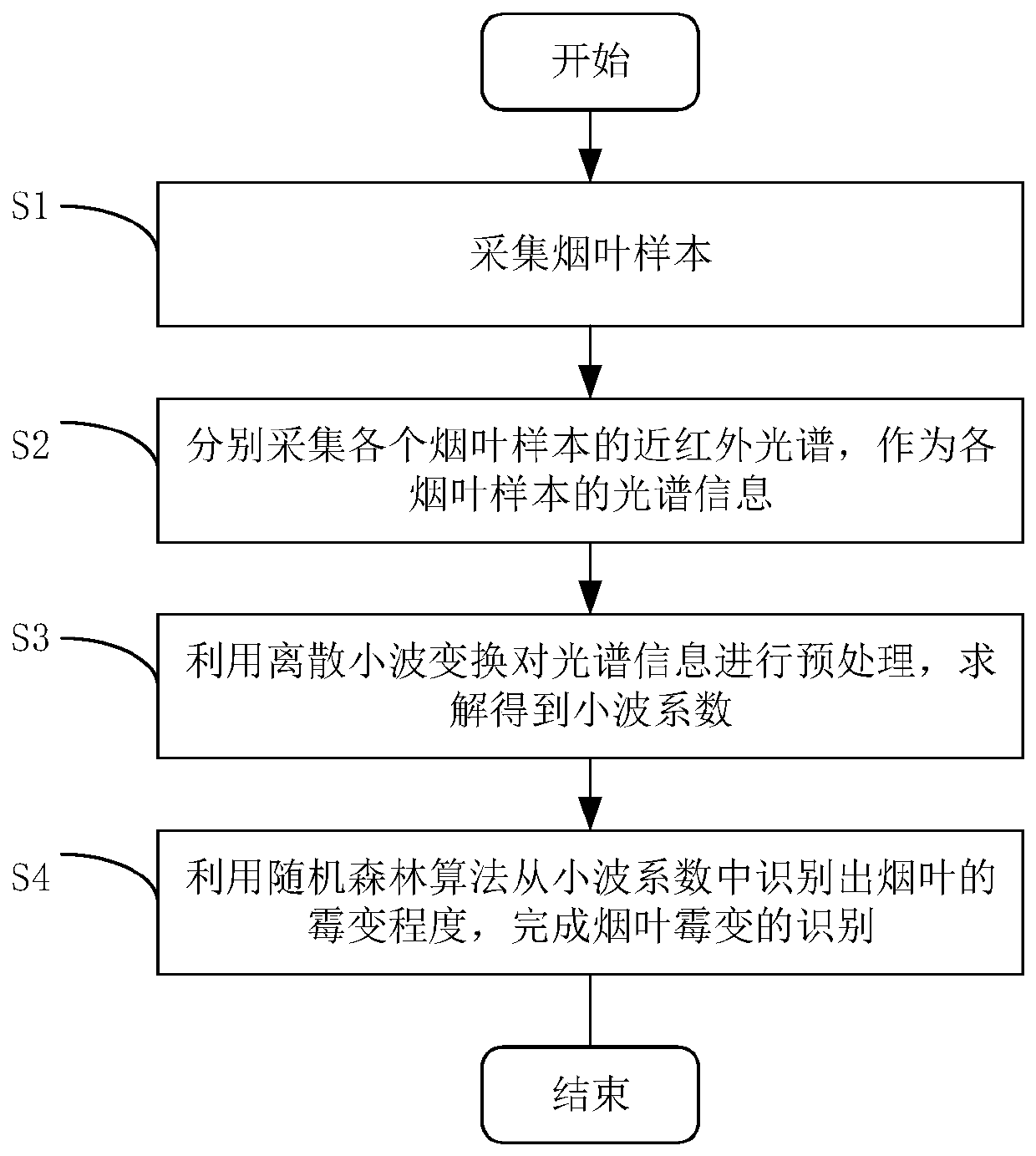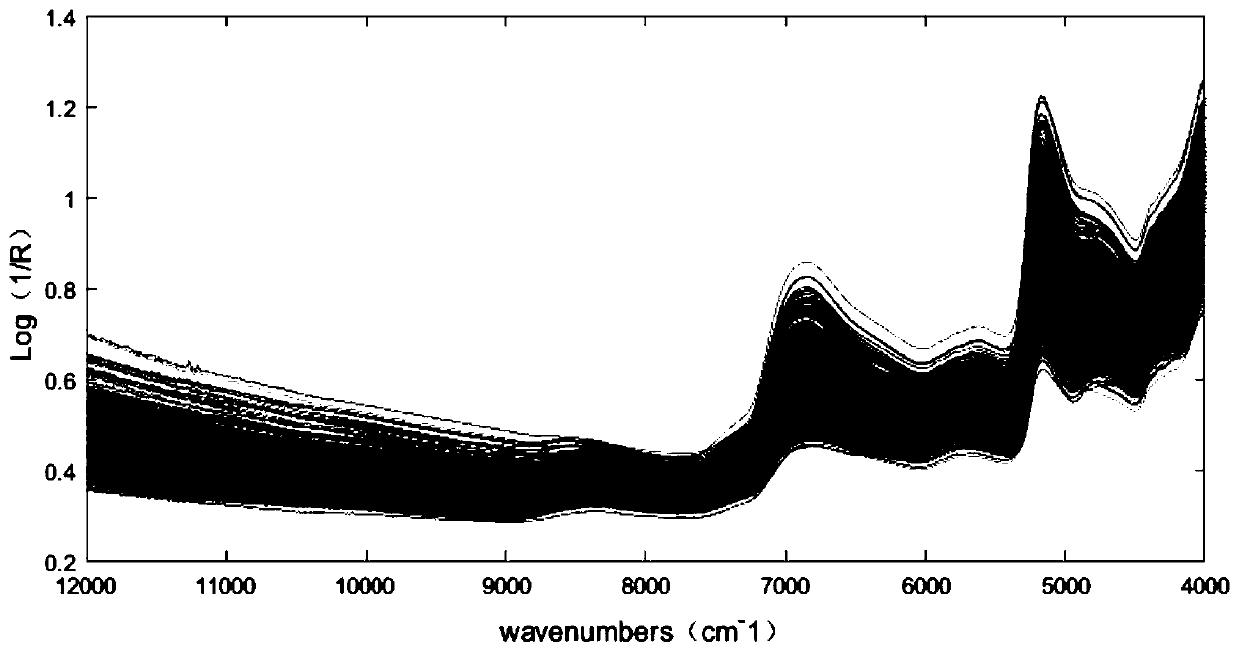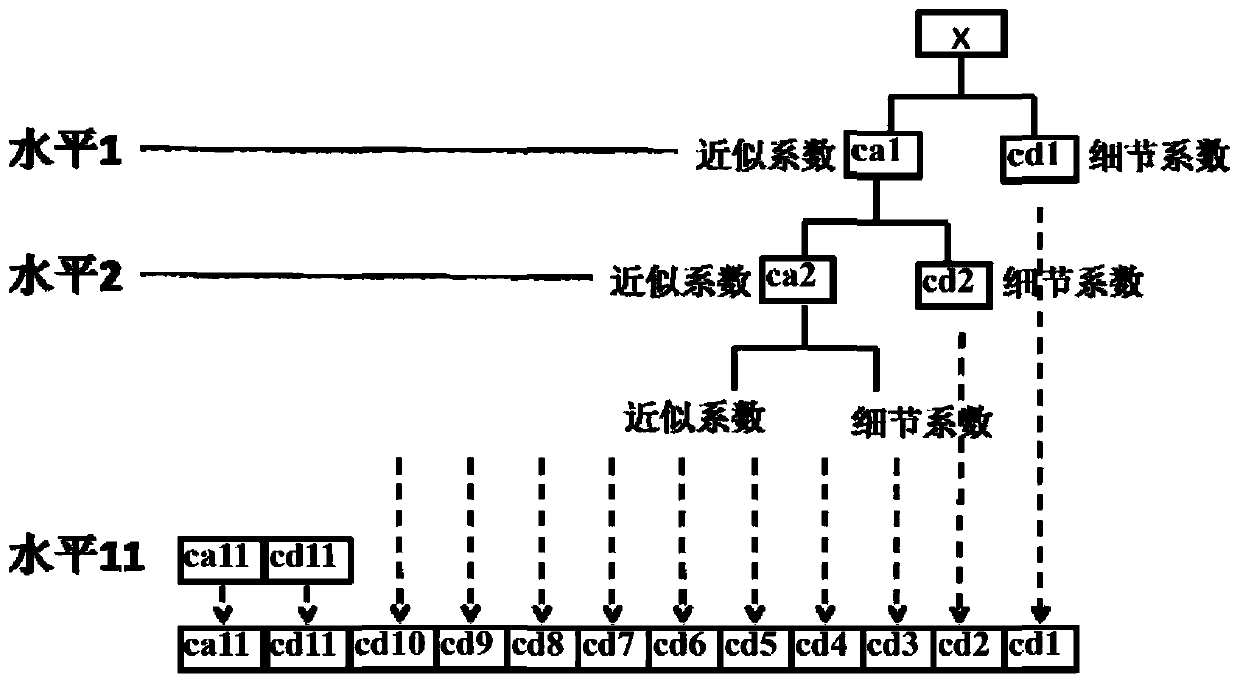Tobacco leaf mildew rapid identification method based on wavelet transform-random forest algorithm
A random forest algorithm and wavelet transform technology, applied in character and pattern recognition, calculation, computer parts and other directions, can solve the problem of not considering tobacco leaf pre-judgment, and achieve effective recognition and accurate prediction, high recognition rate and forecast rate. Effect
- Summary
- Abstract
- Description
- Claims
- Application Information
AI Technical Summary
Problems solved by technology
Method used
Image
Examples
Embodiment 1
[0036] Such as figure 1 As shown, the rapid identification method of tobacco leaf mildew based on wavelet transform-random forest algorithm includes the following steps:
[0037] S1: collecting tobacco leaf samples;
[0038] S2: collect the near-infrared spectrum of each tobacco leaf sample separately, as the spectral information of each tobacco leaf sample;
[0039] S3: Use discrete wavelet transform to preprocess spectral information, and solve to obtain wavelet coefficients;
[0040] S4: Use the random forest algorithm to identify the mildew degree of the tobacco leaves from the wavelet coefficient, and complete the identification of the mildew of the tobacco leaves.
[0041] More specifically, the step S2 is specifically:
[0042] S21: Put the collected tobacco leaf samples into the sample cups respectively, collect the infrared spectrum data of each tobacco leaf sample respectively, and use it as the basic spectral information of each tobacco leaf sample;
[0043] S22...
Embodiment 2
[0057] More specifically, on the basis of Example 1, the mildewed tobacco samples were prepared. Put the re-cured tobacco leaf samples in an environment with a temperature of 22±2°C and a humidity of 60±5% to balance for 48 hours, put the balanced samples into a constant temperature and humidity box, and adjust the temperature and humidity to 25°C and 85% respectively. For the mildew test, take 40 days as a cycle, and take samples in the following way: on the 0th day, that is, before putting it into a constant temperature and humidity box at 25°C and 85% humidity, take the first sampling; on the 3rd to 9th days, take The 2nd to 4th samples were taken at intervals of 3 days; the 5th to 12th samples were taken at 2-day intervals at 11th to 25th days.
[0058] In the specific implementation process, 116 kinds of single-material tobacco were sampled 10 times at different stages, and 1160 tobacco leaf samples with different degrees of mildew were obtained; the 1160 tobacco leaf sam...
PUM
 Login to View More
Login to View More Abstract
Description
Claims
Application Information
 Login to View More
Login to View More - R&D
- Intellectual Property
- Life Sciences
- Materials
- Tech Scout
- Unparalleled Data Quality
- Higher Quality Content
- 60% Fewer Hallucinations
Browse by: Latest US Patents, China's latest patents, Technical Efficacy Thesaurus, Application Domain, Technology Topic, Popular Technical Reports.
© 2025 PatSnap. All rights reserved.Legal|Privacy policy|Modern Slavery Act Transparency Statement|Sitemap|About US| Contact US: help@patsnap.com



